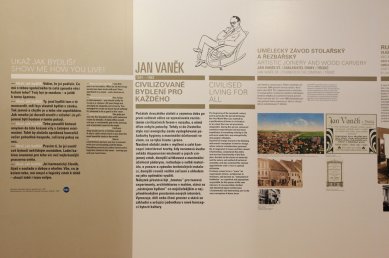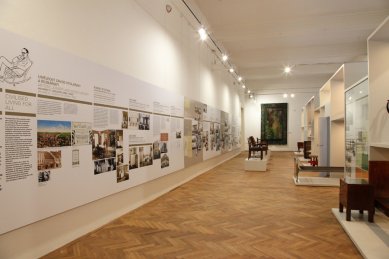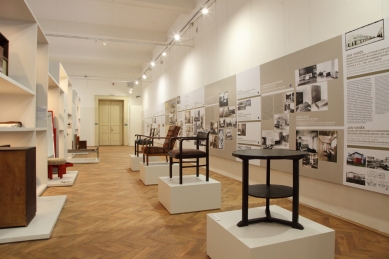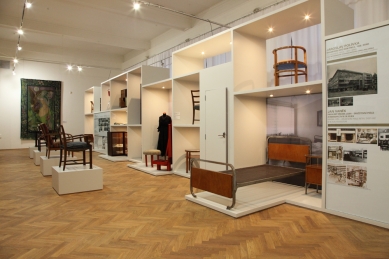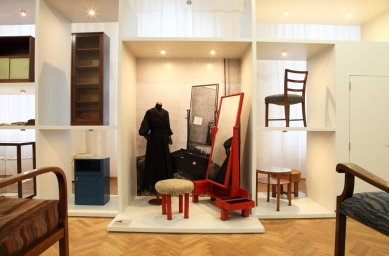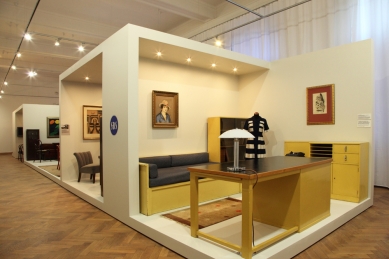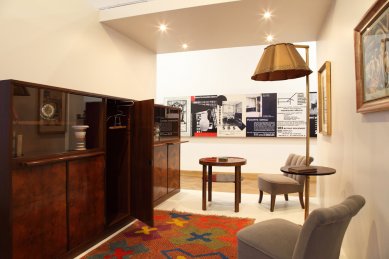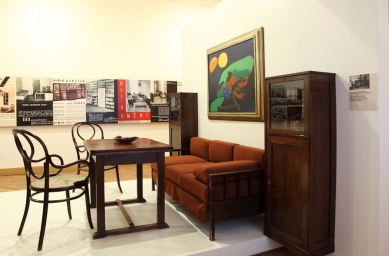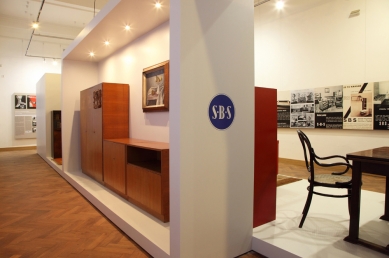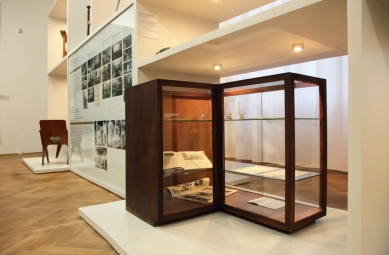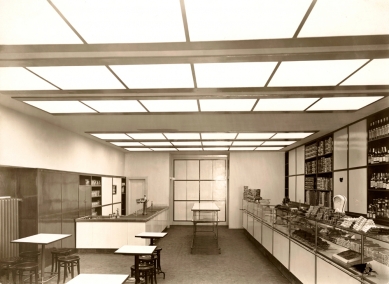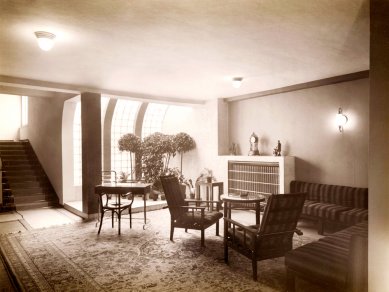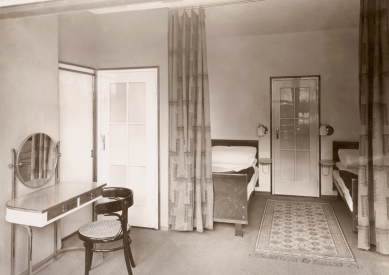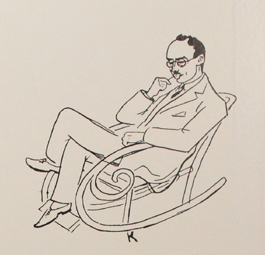 |
| Jan Vaněk - period caricature from the magazine Index |
Motivated by the tradition of his family's furniture business and his father's wish, Vaněk studied at the C.K. vocational school for wood processing in Chrudim. After graduating, he went to Germany, where he gained experience at renowned furniture companies. Upon his return in 1911, he took over the family business in Třebíč, which he reorganized and expanded under the name Umělecko-průmyslové dílny. In 1921, the company became one of the production bases for the emerging Spojené uměleckoprůmyslové závody (UP), which in the following years became the largest furniture company in Czechoslovakia and a synonym for the most progressive trends. Nevertheless, in 1925 Vaněk left not only his position as the local managing director but also the entire company and subsequently founded his own businesses, initially in Brno and from 1934 in Prague, mostly related to furniture design: S.B.S. Brno (Standard Housing Company Brno), PMB Praha (Modern Living Advisory) and DDZ Praha (Workshops for the Home and Garden).
Although he did not undergo formal education, Vaněk's architectural and urban projects represented a logical continuation of his versatile creative activities. He realized model small-sized houses in Černá Hora (1925), in Brno (1925–1926) and a residential colony in Rybitví (1939–1941). He designed the adaptation and extension of the children's sanatorium Healthy Generation in Chocerady (1934–1935) and, together with Ferdinand Fencl, participated in the project of Masaryk Sanatorium in Dobříš (1936–1938), still a relevant and perfect example of architectural and interior design for such a purpose. Surprisingly, he was also the author of the urban study: the complex of production facilities and administrative building of the Association for Chemical and Metal Production in Rybitví near Pardubice (East Bohemian Chemical Works, now Synthesia, a.s.), realized in 1938–1941.
At the Prague version of the exhibition, which was first presented in 2008 at the Museum of the City of Brno, visitors can see until August nearly eighty collection items assembled in spatial installations – authentic examples of interwar furniture of various technologies, constructions, sizes, and origins.
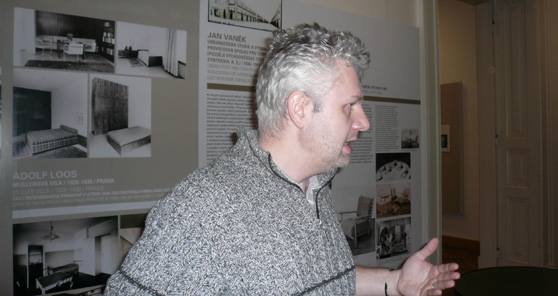 |
| Jindřich Chatrný, author of the exhibition, head of the architecture and urban planning department of the Museum of the City of Brno |



